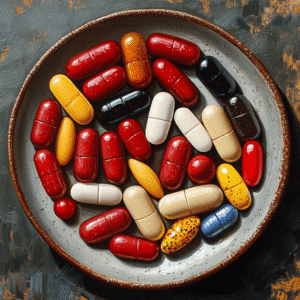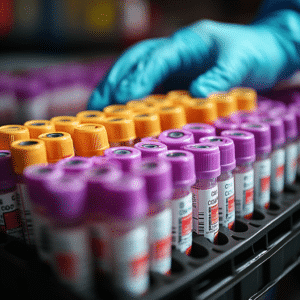Understanding Addiction: Breaking Stigma Around Addiction
Historical Perspectives on Addiction
Addiction has long been misunderstood and stigmatized. Historically, the prohibition era and the 1980s War on Drugs played significant roles in shaping societal attitudes. Nancy Reagan’s “Just Say No” campaign serves as a prime example of significant moments that perpetuated the stigma around addiction. These policies painted addiction as a moral failing rather than a medical condition. Today, however, we’re challenging these antiquated views by understanding addiction as a complex disease—one that requires empathy and medical intervention, not just scorn or judgment.
The Role of Language: Breaking Stigma Around Addiction Through Words
Language profoundly influences our perceptions and actions. Terms like “addict” can dehumanize, while “individual with substance use disorder” fosters compassion and understanding. Research from the Recovery Research Institute highlights that using non-stigmatizing language can improve treatment outcomes. This linguistic shift mirrors broader changes in how society discusses other health conditions, including mental illnesses. It’s a transformative approach that levies the power of words to break the stigma around addiction, encouraging us to view those afflicted through a lens of humanity and compassion.
The Power of Personal Stories: Breaking Stigma Around Addiction Through Human Connections
Real-Life Stories
Celebrities like Demi Lovato and Robert Downey Jr. have openly shared their struggles and successes with addiction, shedding light on the realities of substance use disorders. Their candor helps demystify addiction, proving that recovery is possible and that addiction can touch anyone, regardless of their status or background. These personal stories resonate deeply, encouraging empathy and reducing stigma. Their willingness to be vulnerable highlights the importance of Breaking stigma around addiction and seeking help.
Grassroots Advocacy
Organizations like Shatterproof and Faces & Voices of Recovery employ personal stories to advocate for policy changes and provide support. These grassroots movements illuminate the real faces behind addiction, fostering a united community against stigma. Through advocacy and personal testimonies, these organizations highlight the resilience of individuals and families affected by addiction, encouraging a collective effort to support one another and shape more compassionate policies.
| Category | Description |
| Person-First Language | – Use phrases like “person with a substance use disorder” instead of “addict” or “junkie”. – Avoid terms like “clean” or “dirty” in reference to drug tests; instead use “negative” or “positive”. |
| Harmful Effects of Stigma | – Shame: Leads to feelings of embarrassment and disgrace, discouraging people from seeking help. – Hopelessness: Eliminates hope, making recovery seem impossible. – Isolation: Causes social disconnection, making individuals feel like outcasts. – Reluctance to Seek Help: Fear of judgment prevents individuals from pursuing treatment. – Lack of Understanding: Families and friends may not comprehend the complexities of addiction. |
| Self-Stigma | – Internalized Negative Stereotypes: When people with substance use disorders adopt societal prejudices against themselves. – Public Stigma: Negative attitudes and beliefs from society. – Structural Stigma: Policies and practices within institutions that limit opportunities for people with substance use disorders. |
| Reducing Stigma | – Education: Increase awareness about the nature of addiction as a medical condition rather than a moral failing. – Language: Consistently employ person-first language. – Support: Foster environments where discussing substance use disorders is treated with empathy and understanding. |
| Benefits of Reducing Stigma | – Improved Mental Health: Reduced shame and self-blame promotes better mental well-being. – Access to Treatment: More individuals may seek help, knowing they won’t be judged. – Community Support: Building a supportive community strengthens recovery efforts. – Inclusion: People with substance use disorders feel more accepted and less isolated. |
| Actions for Individuals and Families | – Educate Yourself: Learn about addiction and understand it beyond societal stereotypes. – Open Dialogue: Create safe spaces for honest conversations about struggles and successes. – Advocate for Change: Support policies that promote person-first language and stigma reduction within your community and workplace. |
| Actions for Organizations | – Train Staff: Educate about the importance of non-stigmatizing language and behavior. – Public Campaigns: Run awareness campaigns to change public perceptions. – Policy Reform: Advocate for policies that eliminate discrimination against individuals with substance use disorders. |
Media Representation: Breaking Stigma Around Addiction in Popular Culture
Films and Documentaries
Movies like “Beautiful Boy” and documentaries such as “The Anonymous People” offer intimate insights into addiction and recovery. These narratives challenge stereotypes by exposing the multifaceted nature of addiction. They emphasize that addiction is not a choice but a condition that requires comprehensive care. By showcasing real-life struggles and triumphs, these films promote a more empathetic and informed view of addiction.
Social Media Influence
Social media platforms like Instagram and Twitter are vital arenas for changing perceptions about addiction. Accounts like @sobergirlsociety and @soberisdope celebrate sobriety and educate their followers about the complexities of addiction. Influencers who share their recovery journeys provide valuable resources and foster supportive communities online. This digital advocacy is crucial for spreading awareness and combating stigma on a global scale.
Healthcare and Policy: Breaking Stigma Around Addiction Through Legislative Change
Policy Shifts
Innovative policies, such as Portugal’s decriminalization of drug use, serve as transformative examples of reducing addiction rates and related harms. Examining these policies provides a roadmap for potential reforms in other countries by shifting the focus from punishment to treatment. This change emphasizes health and rehabilitation over criminalization, offering a more humane approach to handling addiction.
Healthcare Initiatives
Programs like Safe Injection Sites and the expansion of Medically Assisted Treatment (MAT) are revolutionizing addiction care. Vancouver’s safe injection sites, for instance, have significantly reduced overdose deaths and infections. These initiatives highlight the importance of harm reduction strategies in saving lives and mitigating the stigma surrounding addiction. They pave the way for progressive healthcare solutions that prioritize the well-being of individuals.
Education and Awareness: Breaking Stigma Around Addiction Through Informed Dialogue
School Programs
Educational initiatives in schools are crucial for breaking stigma around addiction early. Programs like the updated Drug Abuse Resistance Education (DARE) now incorporate evidence-based practices that foster empathy and understanding. By educating young people about addiction comprehensively, we lay the foundation for early prevention and a more informed society.
Corporate Training
Companies such as Google and Amazon have implemented employee wellness programs that include addiction education and support. By normalizing addiction discussions in the workplace, these initiatives help dismantle stigma and create support systems among colleagues. Such corporate efforts underline the importance of inclusive and supportive work environments for individuals facing substance use disorders.
Breaking Down Barriers: Collaborative Efforts in Breaking Stigma Around Addiction
Partnerships and Collaborations
Collaborations between mental health organizations like the National Alliance on Mental Illness (NAMI) and addiction recovery groups are fostering powerful alliances. These partnerships work towards comprehensive treatment and advocacy, bridging the gap between various forms of mental health support. Together, they create a more inclusive and effective approach to combating addiction and its stigma.
International Cooperation
Global initiatives supported by the World Health Organization (WHO) aim to standardize addiction treatment and reduce stigma worldwide. These efforts underscore the importance of a unified, global approach to combating addiction stigma. By sharing knowledge and resources, we can better address the public and structural stigmas associated with substance use disorders.
Transforming Perceptions: Breaking Stigma Around Addiction to Pave the Path Forward
Changing societal perceptions of addiction is an ongoing endeavor that requires persistent, multifaceted efforts. Embracing compassionate language, highlighting personal stories, advocating for supportive policies, and prioritizing education are essential steps in this journey. By breaking stigma around addiction, we create an environment that supports recovery and empowers individuals to seek help.
Embracing these comprehensive strategies ensures that the fight against addiction and its associated stigma is both effective and empathetic. Together, we can pave the way for a healthier, more compassionate future for all.
For more information on long-term recovery planning, aftercare Programs, and Overcoming stigma And raising awareness, feel free to explore our resources at Mothers Against addiction. Your journey, our support.
Breaking Stigma Around Addiction
The Power of Words
Words can be mighty tools in breaking stigma around addiction. By changing how we talk about addiction, we can alter public perceptions and foster a more compassionate society. For example, did you know that according to an article on St. Ambrose of Godfrey, IL, community support plays a vital role in aiding recovery? Words of encouragement and understanding can make a world of difference for someone battling this issue.
Throughout history, words and phrases have evolved, sometimes reinforcing stigma. For instance, the harsh term “junkie” was once commonplace, but shifting to terms like “person with a substance use disorder” reflects a more humane and accurate portrayal. So, why should language evolve? Because it can save lives. For instance, understanding how people die from addiction is crucial for creating awareness and better prevention strategies.
Trivia About Addiction and Language
Here’s a fascinating tidbit: the language we use can also influence employment opportunities for individuals in recovery. Following notable layoffs like those at Ernst and Young, community programs have gained traction in helping recovering individuals re-enter the workforce.
An interesting yet somber fact: words can impact family relationships. For those who have lost a loved one, like Jennifer Hageney, a renowned advocate, discussions about addiction can be particularly sensitive. Terms conveying empathy and support are crucial.
Changing Assumptions
Let’s dig a little deeper: do you know what happens when we assume? Assumptions can perpetuate stigma. For example, the very meaning of the word “assume” can lead to misconceptions, which in turn, affect societal views on addiction. Changing public assumptions through conscious language can aid in reducing stigma and promoting understanding.
Breaking stigma around addiction isn’t just about the words we choose but also about having the courage to change those words. With conscientious effort, we can pave the way for a more enlightened and supportive society.
Each word spoken carries weight. Let’s choose them wisely, with knowledge and empathy.
How do we reduce stigma surrounding mental health and or addictions?
Reducing stigma starts by using person-first language, which focuses on the individual rather than their condition. Educating ourselves and others about the realities of substance use disorders and mental health challenges also helps break down misconceptions and fosters empathy.
How stigma negatively affect recovery?
Stigma can hinder recovery by making individuals feel ashamed or hopeless, which may prevent them from seeking help or sticking with treatment. This misunderstanding from others can create feelings of isolation and depression, further complicating their recovery process.
What is self-stigma in addiction?
Self-stigma involves internalizing negative stereotypes and public judgment, leading individuals to feel embarrassed or less worthy. When people believe these hurtful labels about themselves, it can lower their self-esteem and make them less likely to seek help.
What are two skills that could assist you in avoiding substance abuse?
Two skills that can help prevent substance misuse are building strong decision-making abilities and developing healthy coping mechanisms for dealing with stress and emotions. These skills can empower individuals to make safer choices and handle life’s pressures without turning to substances.
How can we fight back against the stigma of addiction?
To combat the stigma of addiction, we should share accurate information, advocate for compassionate policies, and offer support to those affected. Listening to and amplifying the voices of individuals with lived experiences can also change public perceptions.
What are 5 ways we can fight the stigma of mental illness?
Five ways to fight stigma include: educating yourself and others, challenging myths and stereotypes, supporting those with mental illness publicly, using respectful language, and promoting stories of recovery and hope.
How does stigma affect drug addiction?
Stigma can deeply affect individuals with substance use disorders by fostering feelings of isolation and hopelessness. It can also create barriers to treatment, as people might avoid seeking help due to fear of judgment.
What is the most stigmatized mental illness?
While it’s hard to pinpoint the “most” stigmatized mental illness, conditions like schizophrenia and substance use disorders often face significant public misunderstanding and prejudice.
What are the three types of stigma?
There are three main types of stigma: public stigma, which comes from the social prejudice of others; structural stigma, which is rooted in policies and laws; and self-stigma, where individuals internalize these negative beliefs.
What to say instead of “addict”?
Instead of saying “addict,” you can use “person with a substance use disorder.” This respects their humanity and focuses on the condition rather than the label.
What is the anti stigma campaign for addiction?
Anti-stigma campaigns for addiction work on educating the public about the realities of substance use disorders and challenging harmful stereotypes. They often involve public awareness activities, storytelling from those with lived experiences, and advocacy for more supportive policies.
How do you fix self-stigma?
Fixing self-stigma involves positive self-talk, surrounding oneself with supportive people, and seeking therapy or counseling to build self-esteem and combat internalized negative beliefs.
What is the coping model of addiction?
The coping model of addiction emphasizes understanding substance use as an attempt to manage stress and emotional pain. It encourages developing healthier coping skills as part of recovery.
What is considered the most effective treatment for substance abuse?
The most effective treatment for substance use disorder usually combines behavioral therapy with medication. This integrated approach helps address both the physical and psychological aspects of addiction.
What are the two defense mechanisms commonly used by people who have an addiction?
Common defense mechanisms used by individuals with addiction include denial, where a person refuses to acknowledge their substance use problem, and rationalization, where they justify their behavior with seemingly logical reasons.
How can we reduce the stigma of substance use in health care?
Reducing stigma in healthcare involves training providers to use non-stigmatizing language, promoting empathy and understanding, and creating a safe environment for patients to discuss their issues without fear of judgment.
What intervention reduces mental health stigma?
Interventions that reduce mental health stigma include public education campaigns, promoting direct interactions with individuals with lived experiences, and implementing policies that protect against discrimination.
What are coping strategies for stigma?
Coping strategies for dealing with stigma include seeking social support, practicing self-care, engaging in advocacy efforts, participating in peer support groups, and educating oneself about stigmatized conditions.
How does stigma prevent people from seeking help for mental health issues on Quizlet?
Stigma prevents people from seeking help for mental health issues by creating fears of being judged or discriminated against. This fear can lead to individuals keeping their struggles secret and not accessing the help they need on platforms like Quizlet and beyond.




























